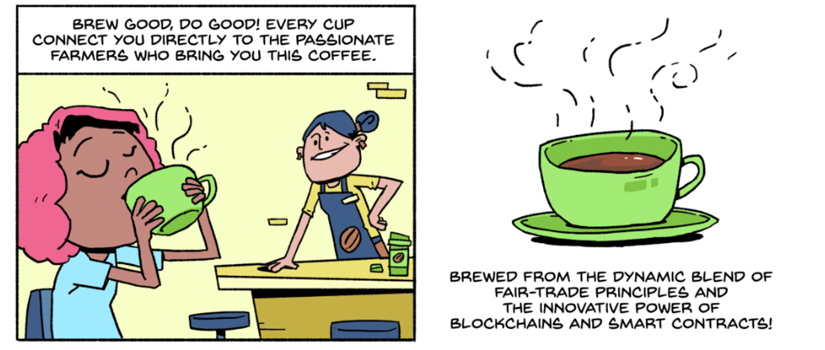Comic strips on the FinTech curriculum were created to make finance technology more exciting
Moore School professor Prateek Sharma created a comic strip for his FinTech class, and it’s been a slam. FinTech or a compounded form of financial technology is a technology used to aid in banking or other financial services.
The comic strip developed by Sharma is used to demonstrate various smart concepts for financial innovations. In the strip, students follow the structure of blockchains, systems recording financial records maintained on computer systems.
“I sought an engaging and entertaining method to illustrate real-life applications of blockchains and smart contracts, showcasing their advantages over current conventional business practices, Professor Sharma said. “I aimed for simplicity, avoiding complex technical jargon. My idea was to craft an animated cartoon, though starting with a comic strip seems like a good beginning.”
While the Fintech curriculum is traditionally taught through lecture-based classes, Sharma’s comic strip bridges amusing content with complex information through an out-of-the-box visual artwork.
“In the comic strip, it demonstrates how Lisa, the owner of a coffee shop, successfully sources raw coffee beans from Maria, a coffee farmer residing in a remote village in Central America,” he said. “The strip illustrates how blockchains and smart contracts can mutually benefit both farmers and coffee consumers by promoting fair trade practices and transparency in transactions.”
The two-page comic strip has vivacious illustrations and concise text for students to follow along to. At first glance, one wouldn't know this was his first time writing and illustrating a comic.
“I illustrated the comic strip myself,” he said. “I did seek the help of my 12-year-old niece, who knows a lot more about animation and drawing using Canva and other drawing tools on an iPad.
His students and even some of his colleagues have become quite the fans of his comic strip, offering him very positive feedback. The overwhelming response has excited Sharma and reassures his new method.
“The feedback has been quite positive. I believe that the straightforward nature of the comic strip effectively communicated what would typically be a complex topic riddled with technical jargon,” Sharma said. “I believe they were able to understand the existing challenges in conventional business practices and how this innovative technology can solve those problems.”
He hopes to continue incorporating his comics into his curriculum to keep his students both engaged and sharp.
“I've been exploring new methods to educate on complex topics,” Sharma said. “I plan to create additional materials along these lines moving forward.”
View the comic strip.
Read the comic strip transcript.
-Christian Osborne
